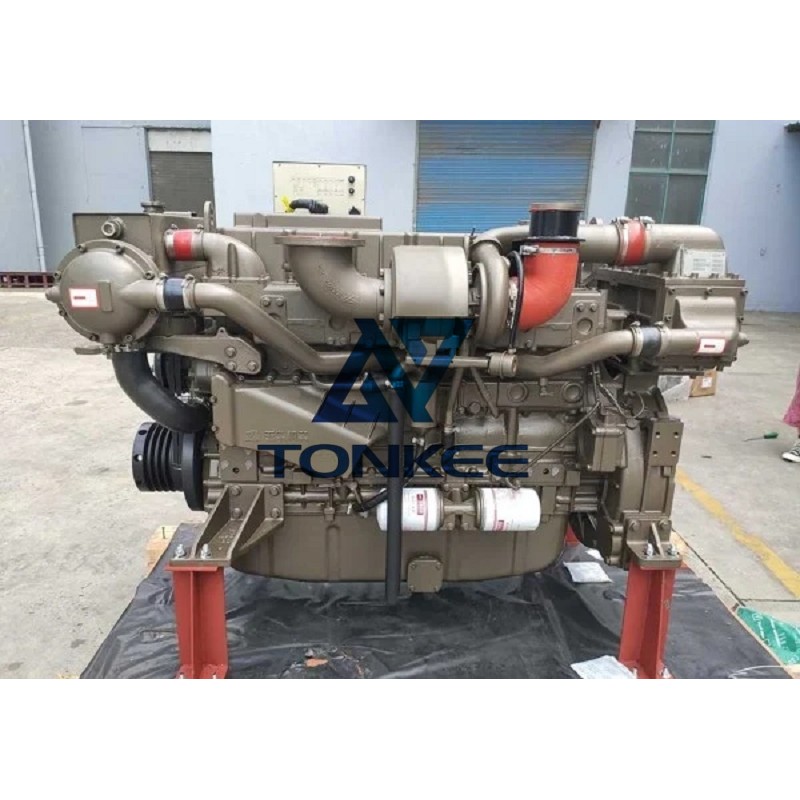
The YC6MK marine diesel engine is a six-cylinder, in-line engine that operates on a four-stroke cycle.
It has a displacement of 10.338 liters, which allows it to deliver high power output. The engine is designed to meet stringent marine emission regulations, such as IMO Tier II and Tier III, ensuring environmental compliance.
One of the key features of the YC6MK engine is its turbocharged and intercooled design. This means that the engine utilizes a turbocharger to increase the amount of air entering the combustion chamber, resulting in improved power and efficiency. Additionally, the intercooler cools down the compressed air, further enhancing the engine's performance.
The YC6MK engine is equipped with a common rail fuel injection system, which enables precise fuel delivery and combustion control. This system optimizes fuel consumption and reduces emissions, making it an eco-friendly choice for marine applications. Moreover, the engine incorporates an electronic control unit (ECU) that monitors and adjusts various parameters in real-time, ensuring optimal performance under different operating conditions.
In terms of power output, the YC6MK marine diesel engine offers a range of options. It has a continuous power rating ranging from 470 to 530 horsepower (HP), making it suitable for a wide range of vessels, including fishing boats, workboats, and small to medium-sized commercial ships. The engine also provides a maximum torque of up to 1820 Nm, ensuring sufficient power for demanding marine operations.
The YC6MK engine features a compact and lightweight design, making it easy to install and integrate into different marine applications.
It has a robust construction with high-quality materials, ensuring durability and long-term reliability even in harsh marine environments. The engine is designed for low maintenance requirements, reducing downtime and operating costs for vessel owners.
Noise and vibration reduction are important considerations for marine engines, and the YC6MK engine addresses this through advanced engineering techniques. It incorporates noise reduction measures, such as optimized combustion processes and improved engine insulation, resulting in quieter operation. Reduced vibration levels enhance overall comfort and minimize the risk of equipment damage.



